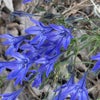Care Advice for Japanese Weeping Cherry
Photo Description
Top Left: Tree unbalanced. Left side producing little. Right side producing well.
Top Right: Shown from opposite side. Full limbs visible without flowering.
Bottom left: Close up of the left side of the tree. Several branches not flowering down full length.
Bottom right: Closer view of the graft and up.
Please do ask for any more clarifying photos if you think it would help.
Questions:
- The tree just started blooming this week. Is it too late to start pruning or should I wait until Autumn?
- Pruning the tree is going to make it even more lopsided than it already is. Would you all recommend trimming back the healthy branches so it’s not so heavy on one side?
- This website gives the advice below. Any thoughts otherwise?
Thank you all so much!
How to Prune a Weeping Cherry Tree
The different types of weeping cherries can grow to between eight and 40 feet tall. Proper pruning keeps these trees looking beautiful and can prevent the development and spread of diseases. Prune while the tree is dormant (no flowers or leaves on the branches) in early spring or late fall. Take the following steps once a year with bypass pruning shears or a pole pruner.
- Cut back any branches that contact the ground until they’re at least six inches off the ground.
- Remove branches that are rubbing against each other.
- Trim back branches that are closer than two inches apart.
- Remove dead branches.
- Remove stems or branches growing out of the trunk or around the base of the tree (a.k.a. suckers).
- Trim back the tips of the branches around the perimeter of the canopy until it’s a balanced, uniform shape.
- Remove branches that are growing straight up on grafted cherry trees because they will continue to grow upward instead of weeping down.
- Thin out the mangled cluster of branches that often develops near the base of the canopy of grafted trees.
- Remove diseased branches as soon as they’re discovered, regardless of the time of year. Sterilize the blade of your cutting tool in between cuts to prevent disease spread.


Add comment